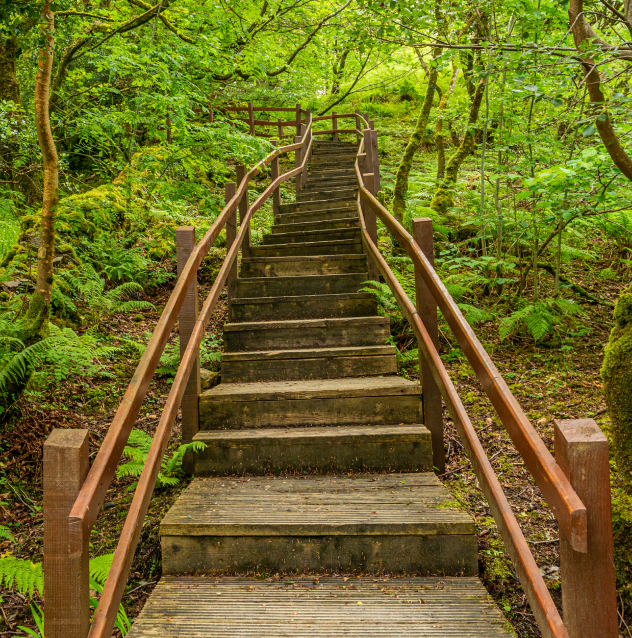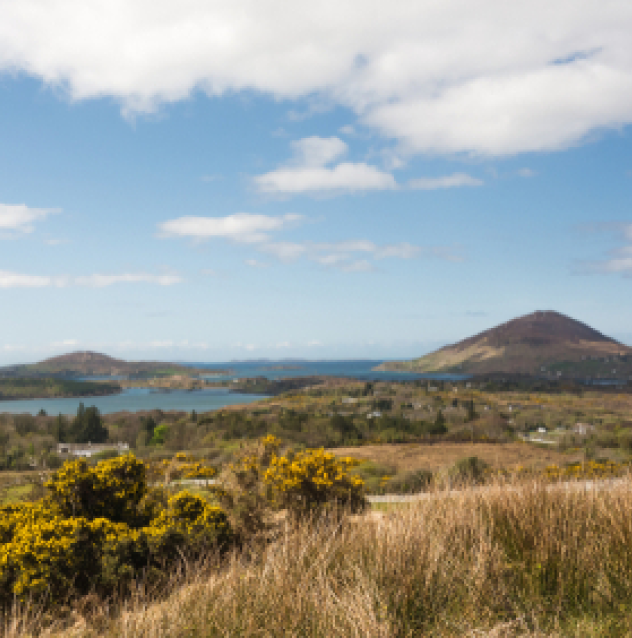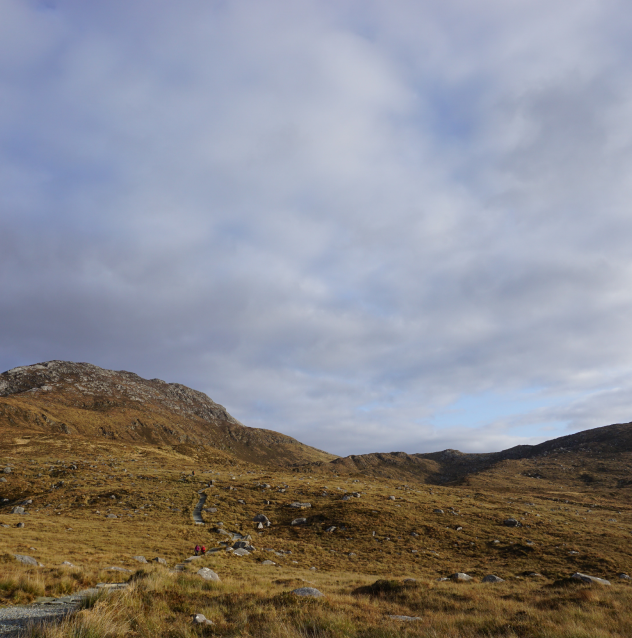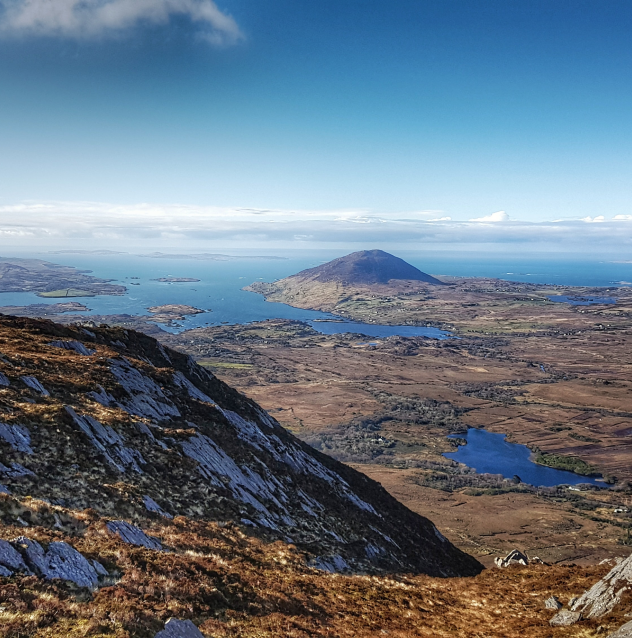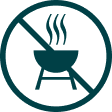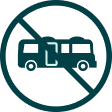Walking & Hiking
Connemara National Park includes part of the Twelve Bens mountain range, including Benbaun, the highest peak in County Galway at 725m. There are four walking trails, but beyond these, there are no formal trails or footpaths.
Exploring the wider National Park is very much for the experienced hiker who can navigate using a map and a compass.
Each of the trails can be accessed from the Visitor Centre situated close to Letterfrack Village. More information can be gained from the Guide staff at the Visitor Centre.

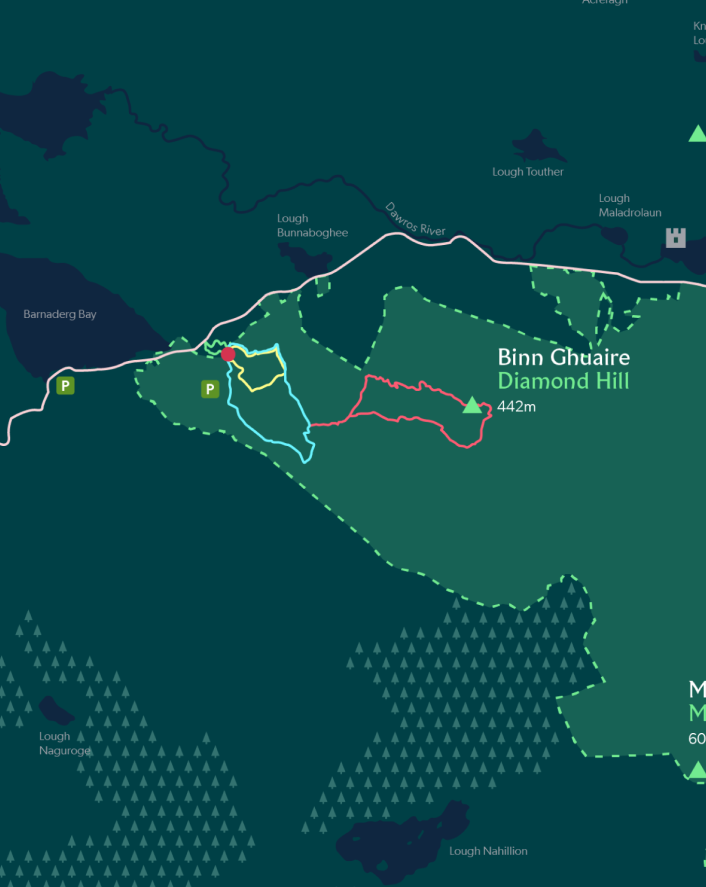
Connemara Walking Trails
| Walking Trails | |
|---|---|
Hill Walking
For visitors wanting to explore the wider National Park, there are no formal trails or footpaths apart from those described. Further exploration is for experienced hikers only and map and compass skills are essential. OS Map Sheet No. 37 covers the National Park lands.
Expect tough and demanding hikes over very mixed terrain that includes bogs and wet grasslands in the lowlands and exposed bedrock and scree at higher elevations. Although the mountains in Connemara are not very high, hiking them is very challenging and those walking the hills should be prepared – see the below website for details.
Ticks & Biting Insects
Ireland is generally a very safe place as regards wildlife. There are no longer any large predators like bears, wolves, or large cats, but Ireland is home to smaller creatures that may prove troublesome. In Connemara National Park, visitors may encounter swarms of midges (small biting flies) on warm and humid days, and walkers venturing off tracks may be bitten by ticks. All walkers should be aware that ticks can, in rare cases, carry Lyme disease. Learn more about ticks and biting insects in our guide below.
Wild Camping
note: Failure to comply with this code will result in withdrawal of permission to camp. In such cases National Park rangers will demand that the visitors break camp.
Connemara National Park has no serviced camping or caravan sites, but if you’re planning a multi-day hiking trip and seeking a wild experience, you’re welcome to pitch camp as long as you obey the camping exclusion zone and follow the Wild Camping Code – that means no fires, careful siting of any catholes, and following the guidelines for camping and washing up. Wild camping is the only sort permitted in the park. Read the full Wild Camping Code below.
Important Notice to Camper Van Visitors
Please note that the Connemara National Park car park cannot facilitate overnight parking/camping at this time. The car park is for daytime visits only. We recommend that camper van visitors who wish to stay overnight use one of the local camper van sites.
Camping Exclusion Zone
Before you camp, take care to avoid the camping exclusion zone as shown in the pdf below. The nearest camping area in the National Park is several kilometres from the Visitor Centre (approximately 2 hours walking time).
In the image attached, the black line is the boundary of the National Park, the area shaded in green is the camping exclusion zone – you are not allowed to camp in this area. All campers found in this area will be asked to break camp immediately.
Enjoy a free exhibition at the Visitor Centre that details the changes in the landscape since the end of the last ice age. Learn about the historical land use of the Park lands and about peatland conservation. There is also a free 20 minute film about the National Park including information on the historical land use, conservation, biodiversity and ongoing work in the National Park.
The playground features a variety of wooden equipment including see-saws, slides, chin-up bars, tunnel and playhouses. There are picnic tables with views of Diamond Hill and there is a small woodland alongside the playground.
There are both indoor and outdoor picnic areas in Connemara National Park.
The indoor picnic area is housed in the main Visitor Centre building. The outdoor picnic areas are around the Visitor Centre.
Barbeques including disposable barbeques are not permitted in the outdoor picnic areas or anywhere in the National Park.
Pop into The Hungry Hiker and enjoy fresh bean coffee, serving cappuccino, latte, americano, espresso, mocha and hot chocolate. Why not treat yourself to a slice of homemade cake whilst sitting in our courtyard, at the foot of Diamond Hill, or in the playground while the kids enjoy some fresh Connemara air.
Open daily: 10:00–17:00
For up-to-date information on opening times see Facebook or contact the manager Dympna Heanue on +353 87 327 7155.
Explore our Tree Trail
Come explore the new Tree Trail at Connemara National Park. The trail starts at the kiosk in the Car Park and brings people on a route exploring the tree diversity on the site. Keep an eye out for different signs. Below you will find a map and some information about different trees to be found on the trail.
Scots’ Pine (Pinus sylvestris)
Hazel (Corylus avellana)
Oak (Quercus petraea)
Holly (Ilex aquifolium)
Poetry Trail
Letterfrack has its very own poetry trail, which consists of nine specially comissioned poems on plaques in various locations.
The poems explore the themes of place and are located in the National Park, the Connemara West Centre and the village of Letterfrack, linking three places and making for a vary pleasant, thought-provoking walk. See more on the Letterfrack Poetry trail here.
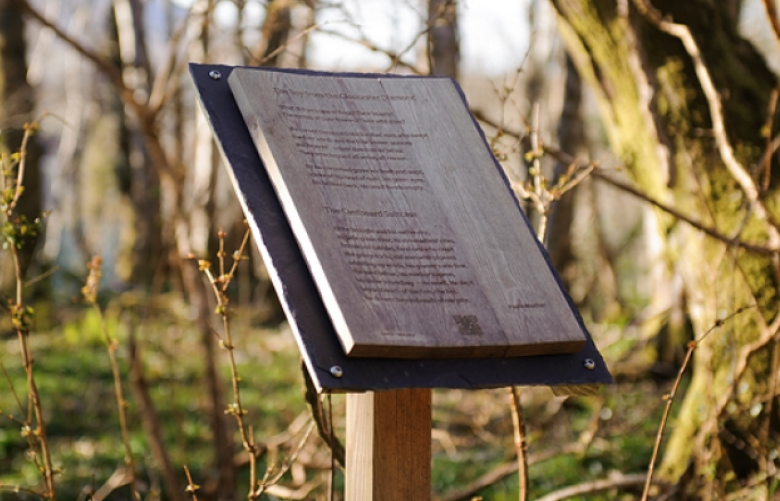
Photography & Drones

With its beautiful scenery and wildlife, the National Park is a mecca for photographers. Visitors are welcome to take photographs for their own use.
Commercial photography and filming will require a permit. Please contact us for more details. Permits should be made at least seven working days in advance (preferably longer).
Low flying aircraft and objects (drone, kites, hand-gliders etc.) are forbidden within the Park because of the potential disturbance to wildlife, in particular nesting birds. In addition to possible wildlife disturbances, photographic drones are an invasion of the privacy of other visitors.
Drones and drone photography are only allowed in the National Park under permit and will only be granted under very special circumstances. Permit applications will only be considered where applicants can also provide evidence of adequate levels of insurance and drone licenses.
Dogs
Dogs are welcome in the National Park, but they must be kept on a lead at all times, and owners are asked to comply with our Code of Conduct.
Dog owners must at all times be conscious of their responsibility to other visitors and wildlife. The following points will help dogs, their owners, other visitors and wildlife to have a safe and happy visit.
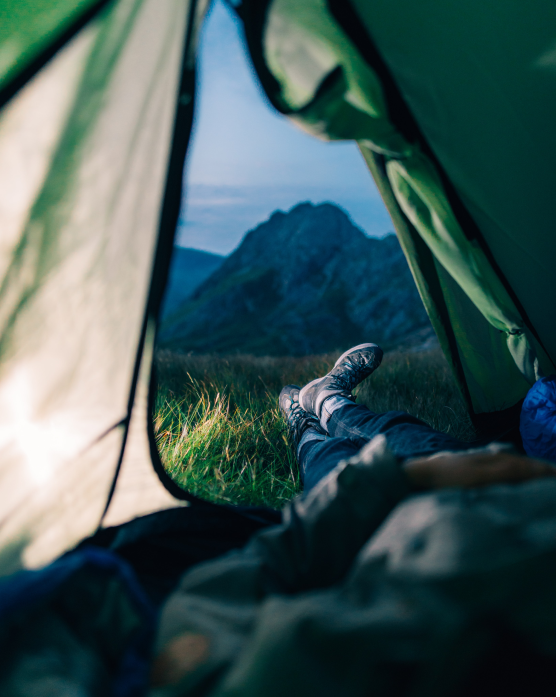
Some activities in the National Park require a permit, including any event with more than 10 people or any event that includes camping.
Applications should be made to the Park Manager in writing, in person or by telephone. Permit requests that include camping should be made at least seven days prior to the proposed event. Certain permits require you to produce a certificate of insurance.
Permit holders
Persons acting under permit must produce that permit on request for inspection by park staff.
If you have any queries, please contact us.


